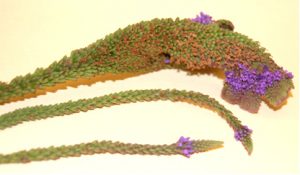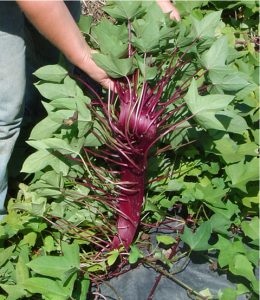Every so often, gardeners find a deformed-looking flower or stem that appears as if the plant has bulked up on steroids. The stem or flower stalk will appear somewhat squashed and splayed, sometimes splitting in two or more sections. Or it may appear that two or more stalks have merged together to form one distorted structure.
This odd growth is called fasciation, which literally translates to banding or bundling. Fasciation is thought to be caused by a hormonal imbalance. In some cases, this imbalance could be a random genetic mutation or, in other cases, induced by one or more environmental factors, including bacteria, fungi, virus, insects, frost and physical damage to the growing point.
The good news is that fasciation itself is not “contagious” and does not spread through a planting. And just because a particular plant exhibited fasciation one season does not necessarily mean it will again in the future. In most cases, fasciation is just a random oddity.
Some plants are actually valued for their fasciations, most notably the cockscomb Celosia, a popular bedding plant flower, and the fantail willow, an ornamental shrub also popular for floral arrangements.

